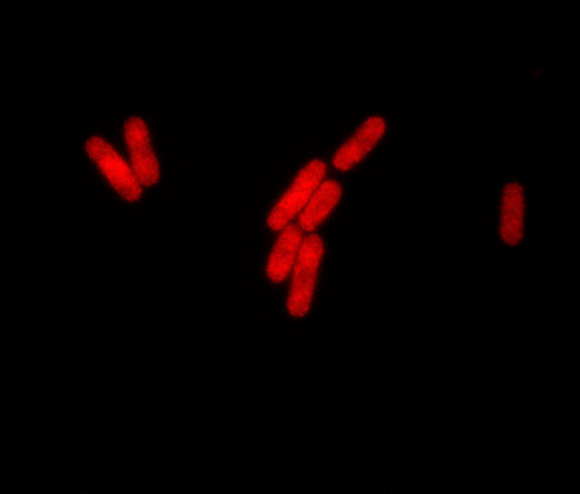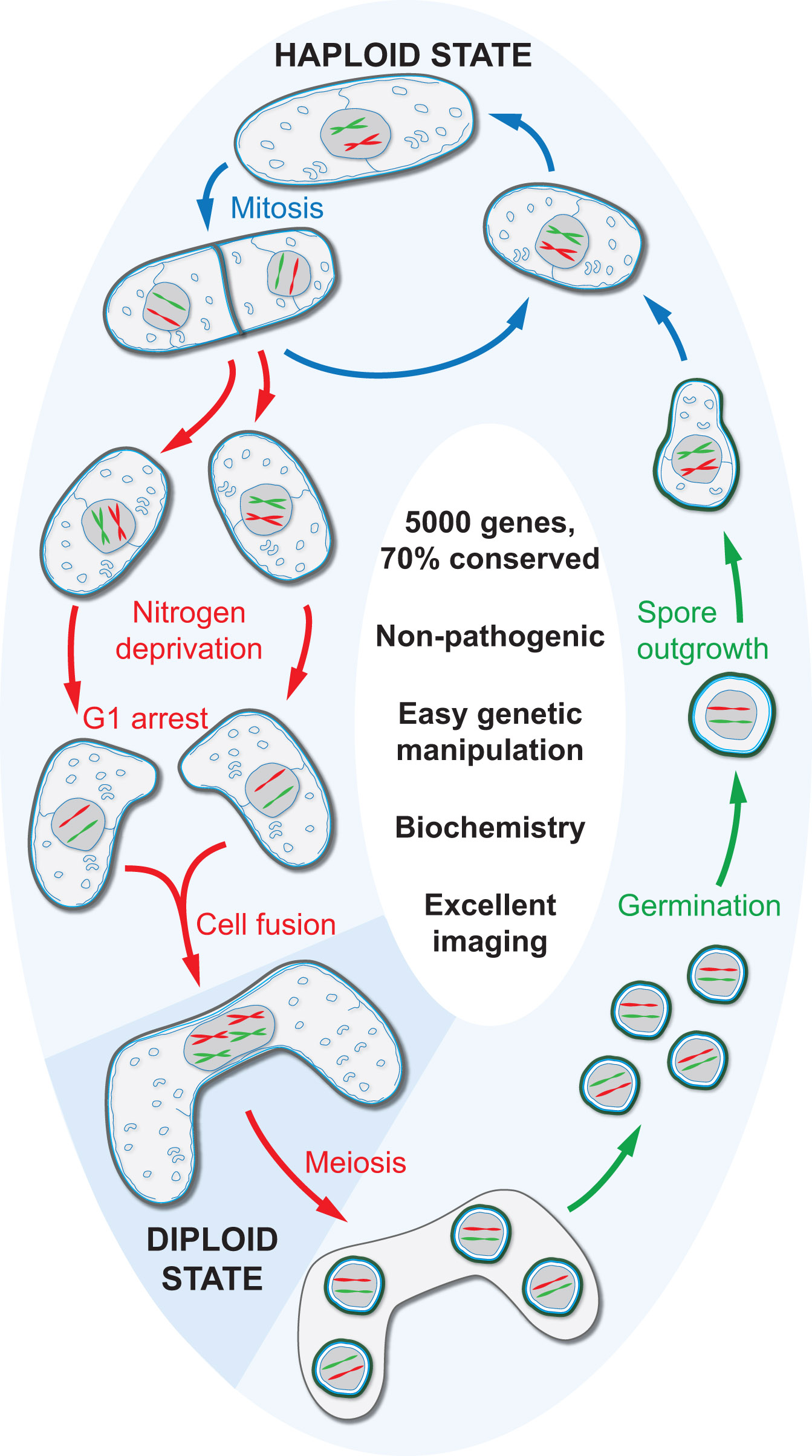Research
We aim to understand how cells are spatially organized. Our efforts concentrate on probing the mechanisms by which cells pattern their cortex to achieve local function. Our work touches on the organization of the cytoskeleton and the plasma membrane, on the spatial organization of signaling pathways and on principles of cell polarization.
For our work, we mainly use a simple eukaryotic model organism, the fission yeast Schizosaccharomyces pombe. This organism only encodes 5000 genes but 70% are conserved in humans. It offers a large palette of tools and displays a rich physiology, which allow to assign function and dissect molecular mechanisms of action.
We have several ongoing projects
Principles of cell polarization: We aim to define the composition and mechanisms of the core polarization machinery, addressing how spatial landmarks and feedbacks combine to achieve robust cell polarization. Our focus is on the small Rho-family GTPase Cdc42, conserved in all eukaryotes.
Chemotropism: Most cells are able to respond and orient in response to external chemo-attractants. We use the mating response of yeast cells, during which they polarize growth in response to pheromones, to probe the mechanisms of gradient sensing and cell pairing.
Mechanisms of cell-cell fusion: How do eukaryotic cells fuse together? This is a fundamental process essential for the formation of the zygote during sexual reproduction. We aim to understand how fungal cells locally digest their cell wall and merge their plasma membranes. An important topic of research is the role and organisation of the formin-nucleated actin fusion focus.
Role of sterols in cellular organization: Sterols are important lipids constituting up to 40% of the plasma membrane, with a wide range of functions in membrane organization, vesicle trafficking and cell polarization. Our recent work established fission yeast as a simple model to investigate the flow of sterols through the cell and the role of the actin cytoskeleton in this flow.
In previous work, we investigated the coordination of cell growth with division: Cells reproducibly divide at constant cell size, but the mechanisms of cell size homeostasis remain very elusive. We focused on how geometric cues, provided through concentration gradients of a kinase from the cell extremities, contribute to defining an appropriate division size.


